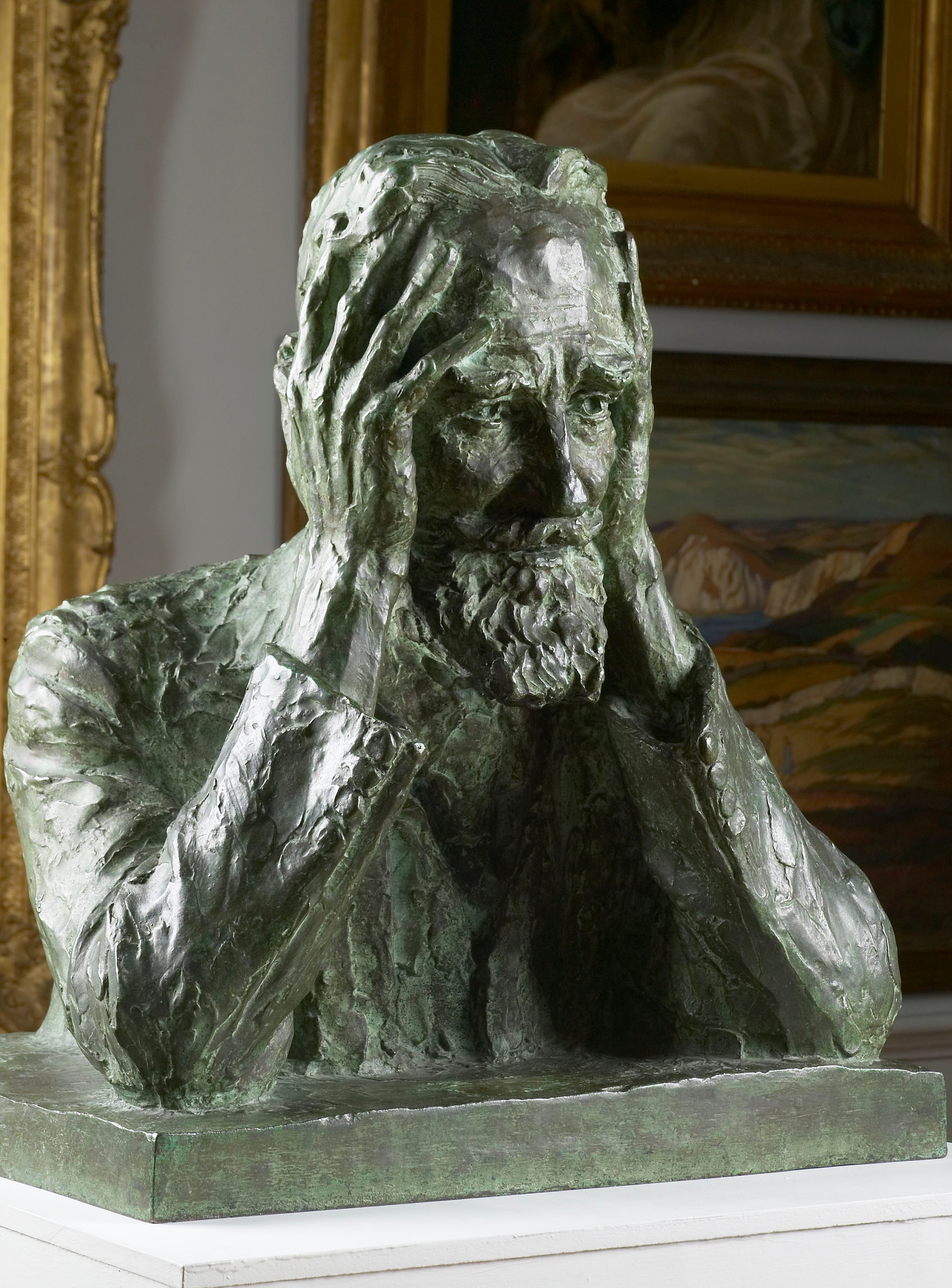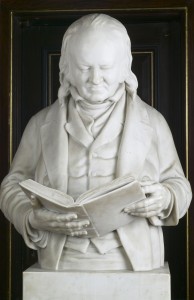Facing up to portraits at the Russell-Cotes Art Gallery and Museum by Alex O’Donnell

Bronze bust of George Bernard Shaw, by Lady Kennet, Kathleen Scott, c. 1930-1940, Russell-Cotes Art Gallery and Museum
With so little known about many of the nineteenth and early twentieth century portraits in the Russell-Cotes collection, the Understanding British Portraits Bursary presented the perfect opportunity to discover more, with the aim of creating a primary school offer focused on portraits as a result of this research.
We were aware, for example, of two busts in our collection that seemed to be very close cousins with photographs and portraits in the National Portrait Gallery’s collection, but were unaware of any direct links between these.
In the Heinz Archive I was intrigued to find a photograph by Dorothy Wilding of George Bernard Shaw in a similar pose to that of our bronze bust by Kathleen Scott (later Lady Kennet); in both portraits he leans on a table with his head in his hands.
I was able to access The Pursuit of Perfection (1991) at the National Portrait Gallery Library, in which Terence Pepper recounts the history behind the photograph. The story goes that Wilding had been commissioned to take this photograph on the spur of the moment. Shaw had just received a hair cut he was rather pleased with, so he went directly to Wilding’s studios (which were in the same building as the hairdressing salon) and requested a portrait right then and there.
Pepper suggests that the Wilding photograph formed a basis for the bust in the Russell-Cotes’ collection – a nice thought, as it properly renders his hairdo in all its 3D glory for posterity. Shaw really got his money’s worth from that ‘do’.
The Heinz Archive also shed some light on a marble bust we have by John Adams-Action. The bust is of John Landseer, the father of Sir Edwin Landseer. Our Collections Officer had recently encountered a painting by Sir Edwin Landseer in the National Portrait Gallery which is reminiscent of our bust – John Landseer is dressed in similar attire and stands in the same position, holding a book open in front of him, with a benign expression on his face.
A letter from Landseer’s grandson Edwin MacKenzie in the Heinz Archives supports the connection between bust and painting. MacKenzie recounts how the marble bust was modelled posthumously, based on a combination of Sir Edwin Landseer’s painting and a plaster bust by Sir Francis Legatt Chantrey. Landseer’s daughter, who had commissioned the bust, seems not to have been too happy with Chantrey’s version.
According to MacKenzie, she ‘asked Adams Acton to copy the [plaster] bust and alter these details’ that she did not like. Sir Edwin Landseer’s painting, on the other hand, was commended as a striking likeness by contemporary critics and as such seems to have suggested itself to Adams-Acton as an alternative source of information for the marble bust.
Finding out more about John Landseer himself has also been enlightening, as we had too often dismissed him merely as ‘Sir Edwin Landseer’s father’. John Landseer was a talented engraver, writer and antiquary; he appealed to the Royal Academy to consider engravers the equal of sculptors and painters, theorising that engraving was ‘sculpture by incision’. He has definitely been transformed in our eyes as a result of this research from a kindly-looking father figure, to a dynamic creative individual in his own right.
These connections between photographs, paintings and busts are just one example of how the UBP Bursary has helped us to deepen our understanding of artefacts in our collection, which will no doubt form a valuable resource for future interpretation and school sessions. After all, most people can relate to fatherly affection and a good haircut!




Comments
Interesting post. The bust certainly resembles the portrait of John Landseer in the NPG. He was indeed a formidable figure: a talented engraver, a champion of engraving as an art form, plus a determined campaigner for engravers’ rights in the Royal Academy. One query, the Edwin Mackenzie referred to is probably Sir Edwin Landseer’s nephew, not grandson, being the son of his youngest sister, Emma Mackenzie (née Landseer).
Hello,
Last July i was the luckiest bidder on a painting from sir Edwin landseer (eppli auctions)
It is a Portrait of a gentleman reading in a book.
I do have some questions about this painting.
How can i contact you?
Regards,
Pierre van egdom
Hello Pierre,
You can contact us on [email protected] and we’ll see what we can help with.
regards!